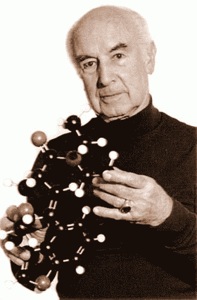Scholars run down more clues to a Holocaust mystery
Budapest, November 1944: Another German train has loaded its cargo of Jews bound for Auschwitz. A young Swedish diplomat pushes past the SS guard and scrambles onto the roof of a cattle car.
Ignoring shots fired over his head, he reaches through the open door to outstretched hands, passing out dozens of bogus "passports" that extended Sweden's protection to the bearers. He orders everyone with a document off the train and into his caravan of vehicles. The guards look on, dumbfounded.
Raoul Wallenberg was a minor official of a neutral country, with an unimposing appearance and gentle manner. Recruited and financed by the U.S., he was sent into Hungary to save Jews. He bullied, bluffed and bribed powerful Nazis to prevent the deportation of 20,000 Hungarian Jews to concentration camps, and averted the massacre of 70,000 more people in Budapest's ghetto by threatening to have the Nazi commander hanged as a war criminal.
Then, on Jan. 17, 1945, days after the Soviets moved into Budapest, the 32-year-old Wallenberg and his Hungarian driver, Vilmos Langfelder, drove off under a Russian security escort, and vanished forever.
And because he was a rare flicker of humanity in the man-made hell of the Holocaust, the world has celebrated him ever since. Streets have been named after him and his face has been on postage stamps. And researchers have wrestled with two enduring mysteries: Why was Wallenberg arrested, and did he really die in Soviet custody in 1947?
Researchers have sifted through hundreds of purported sightings of Wallenberg into the 1980s, right down to plotting his movements from cell to cell while in custody. And fresh documents are to become public which might cast light on another puzzle: Whether Wallenberg was connected, directly or indirectly, to a super-secret wartime U.S. intelligence agency known as "the Pond," operating as World War II was drawing to a close and the Soviets were growing increasingly suspicious of Western intentions in eastern Europe.
Speculation that Wallenberg was engaged in espionage has been rife since the Central Intelligence Agency acknowledged in the 1990s that he had been recruited for his rescue mission by an agent of the Office of Strategic Services, the OSS, which later became the CIA.
About the Pond, little is known. But later this year the CIA is to release a stash of Pond-related papers accidentally discovered in a Virginia barn in 2001. These are the papers of John Grombach, who headed the Pond from its creation in 1942. CIA officials say they should be turned over to the National Archives in College Park, Md.
In February, the Swedish government posted an online database of 1,000 documents and testimonies related to Wallenberg's disappearance. In a few months, independent investigators plan to launch a Web site with their nearly 20-year research into Russian archives and prison records. Russia is building a Museum of Tolerance that will feature once-classified documents on Wallenberg. And the CIA last year relaxed its guidelines to reveal details of its sources and intelligence-gathering methods in the case.
Despite dozens of books and hundreds of documents on Wallenberg, much remains hidden. The Kremlin has failed to find or deliver dozens of files, Sweden has declined to open all its books, and The Associated Press has learned as many as 100,000 pages of declassified OSS documents await processing at the National Archives.
The Russians say Wallenberg died in prison in 1947, but never produced a proper death certificate or his remains.
But independent research suggests he may have lived many years - perhaps until the late 1980s. If true, he likely was held in isolation, stripped of his identity, known only by a number or a false name and moving like a phantom among Soviet prisons, labor camps and psychiatric institutions.
In 1991, the Russian government assigned Vyacheslav Nikonov, deputy head of the KGB intelligence service, to spend months searching classified archives about Wallenberg.
"I think I found all the existing documents," Nikonov e-mailed The Associated Press last month. The Soviets believed Wallenberg had been a spy, he said, but unlike many political detainees he never had a trial.
Nikonov's conclusion: "Shot in 1947."
Later in 1991, Russia and Sweden launched a joint investigation that lasted 10 years but failed to reach a joint conclusion.
The 2001 Swedish report said: "There is no fully reliable proof of what happened to Raoul Wallenberg," and listed 17 unanswered questions.
The Russian report bluntly said, "Wallenberg died, or most likely was killed, on July 17, 1947." It named Viktor Abakumov, the head of the "Smersh" counterintelligence agency, as responsible for the execution and cover-up. It said the Russians consider the Wallenberg case "resolved."
Unsatisfied, independent consultants and academics have kept digging, analyzing, reassessing old information and pressing for the Kremlin to release missing files.
___
Wallenberg arrived in Budapest in July 1944. With the knowledge of his government, his task as first secretary to the Swedish diplomatic legation was a cover for his true mission as secret emissary of the U.S. War Refugee Board, created by President Franklin D. Roosevelt in a belated attempt to stem the annihilation of Europe's Jews.
In the previous two months, 440,000 Hungarian Jews had been shipped to Auschwitz for extermination. They were among the last of six million Jews slaughtered in the Holocaust.
Of the 230,000 who remained in the Hungarian capital in mid-1944, 100,000 survived the war.
After the Red Army arrived in January, Wallenberg went to see the Russian military commander to discuss postwar reconstruction and restitution of Jewish property. Two days later he returned under Russian escort to collect some personal effects, then was never seen in public again.
And what did his country - or his influential cousins - do about it?
Looking back a half century later, the Swedish government acknowledged that its own passive response to the detention of one of its diplomats was astounding, and that it had missed several chances to win his freedom.
"The worst mistakes were done in the first two years," said Hans Magnusson, the Swedish co-chairman of the 10-year investigation with the Russians. Sweden felt intimidated by the mighty Soviets and unwilling to challenge them, he said.
In the mid-1950s, the Swedes pursued the case more aggressively, prompting a memorandum from Soviet Foreign Minister Andrei Gromyko in 1957 that Wallenberg had died of heart failure in detention 10 years earlier - at age 34.
As more testimony came in that Wallenberg was still alive, Stockholm periodically raised the issue with Moscow - but without results, said Magnusson, interviewed in the Netherlands where he is now ambassador.
Sweden could have pushed harder, he said, "but I doubt it would have achieved more."
"It is inconceivable," says Wallenberg's half-sister, Nina Lagergren. "Here is a man sent out by the Swedish government to risk his life. He saved thousands of people - and he was left to rot."
___
Some time around 1994, Susan Mesinai, who had by then been researching the Wallenberg case for five years, visited Lucette Colvin Kelsey, Wallenberg's cousin, at her home in Connecticut. After lunch, Kelsey caught up with Mesinai as she got into the car and told her: "Raoul was working for the highest levels of government."
"So I said to her, 'How high? Do you mean the president?' And she nodded her head," Mesinai said, disclosing to AP a conversation she had kept confidential for 14 years.
Kelsey's father, Col. William Colvin, had been the U.S. military attache in the Swedish capital around the time of World War I. Wallenberg spent vacations in the 1930s with the Colvin family while he earned a degree in architecture at the University of Michigan. Kelsey, who was a year younger than her cousin, died in 1996.
Rather than clarify anything, Kelsey's cryptic remark only deepened the fog.
Wallenberg's rescue mission inevitably placed him in a vortex of intrigue and espionage involving the Hungarian resistance, the Jewish underground, communists working for the Soviets, and British, U.S. and Swedish intelligence operations. He also had regular contact with Adolf Eichmann and other Nazis running the deportation of Jews.
Whether or not he himself was passing on intelligence, Russia had plenty of reason to suspect him of spying, either for the Allies or Germany - or both.
"Wallenberg had ties to all the major actors in Hungary," says Susanne Berger, a German researcher who collaborated with the Swedish-Russian research project.
The Stockholm chief of the War Refugee Board, Iver C. Olsen, was also a key member of the 35-man OSS station in the Swedish capital, and it was he who recruited Wallenberg, who in turn kept the U.S. connection secret by sending his communications through Swedish diplomatic channels.
Olsen's OSS personnel file - unpublished until the AP viewed it at the National Archives - revealed that the American was cited for using his position at the War Refugee Board "in gathering important information for the OSS and for the State Department."
In 1955 Olsen denied to the CIA that Wallenberg ever spied for the OSS, and Mesinai and Berger offer a different likelihood: that the Swede was a source for the Pond, which was a rival to the OSS known only to Roosevelt and a few insiders in the War and State Departments.
A small clandestine intelligence-gathering operation, the Pond relied on contacts in private corporations and hand-picked embassy personnel. It worked closely with the Dutch electronics company N.V. Philips, "which had access to 'enemy' territory as well as a far-flung corporation intelligence apparatus in its own right," said former CIA analyst Mark Stout who wrote a brief unofficial history of the Pond.
So far, no evidence has emerged that Wallenberg worked for the Pond, and Stout said in an interview he had not seen Wallenberg mentioned in any papers he has reviewed.
But their circles of contacts intersected at several points, including members of the Hungarian resistance and possibly the Philips connection.
"The Pond was centered around President Roosevelt's office and rumors of a special mission, intelligence or otherwise, for Raoul Wallenberg have persisted through the years," said Berger, who suspects the Soviets knew about the agency.
It may have been just one more reason for Stalin to order his arrest, she said. Regardless of whether Wallenberg was involved, "the Pond's activities clearly would have served to enhance Soviet paranoia about Allied activities and aims in Hungary."
Hungarian historian Laszlo Ritter, of the Institute of History of the Hungarian Academy of Sciences, said the Philips company also was providing cover for Britain's MI6 intelligence service. One of its crucial agents in the Balkans was Lolle Smit, who was knighted after the war by both Britain and his native Holland.
One month before Wallenberg arrived, Smit fled Budapest for Romania, from where he continued to control his network, Ritter said, but he left his family behind.
Smit's daughter, Berber Smit, worked with Wallenberg in his rescue efforts - and "had a romance with him," according to her son, Alan Hogg.
Ritter said Hungarian war files show no direct tie between Wallenberg and Smit, or between the diplomat and British intelligence. At the same time, MI6 used the Swedish legation at least twice to smuggle out information, and helped give false papers to Jews and the anti-fascist resistance, he said.
When the OSS wanted to dispatch a radio to the Hungarian underground leader Geza Soos, it sent the transmitter with a Swedish intelligence officer and told him Wallenberg would know how to contact Soos.
Wallenberg's very name may have been enough to arouse Russian distrust. Throughout the war, his cousins Marcus and Jacob Wallenberg, the czars of a banking and industrial empire, had done business in Germany, producing the ball bearings that kept its army on the move.
The Wallenbergs also were involved in discreet, unsuccessful peace efforts between the Allies and Germany, which Stalin feared would leave him excluded - a foretaste of global realignment that would lead to the Cold War.
___
In December 1993, investigator Marvin Makinen of the University of Chicago interviewed Varvara Larina, a retired orderly at Moscow's Vladimir Prison since 1946. She remembered a foreigner who was kept in solitary confinement on the third floor of Korpus 2, a building used both as a hospital and isolation ward.
Though it was decades earlier, the prisoner stood out in Larina's memory. He spoke Russian with an accent and "complained about everything," she said. He repeatedly griped that the soup was cold by the time Larina delivered it. Prison authorities ordered her to serve him first.
"This is very unusual," Makinen said in an interview. Normally, such complaints would condemn an inmate to a punishment cell. "The fact that he wasn't means he was a very special prisoner."
When shown a gallery of photographs, Larina immediately picked out Wallenberg's - one never published before, Makinen said.
She recalled he was in the opposite cell when another prisoner, Kirill Osmak, died in May 1960.
That was enough for Makinen and Chicago colleague Ari Kaplan to roughly pinpoint the cell of Larina's foreigner. Creating a database of cell occupancy from the prison's registration cards, they found two units opposite Osmak's that were reported empty for 243 and 717 days respectively.
Normally, cells were left vacant for a week at most, Makinen said. The researchers concluded that those two cells likely held special prisoners, namelessly concealed in the gulag.
Mesinai and others reviewed hundreds of accounts over the decades of people who claimed to have seen or heard of someone who could have been Wallenberg. They established a pattern of sightings, even though many individual reports were considered unreliable, uncorroborated, deliberate hoaxes or cases of mistaken identity with other Swedish prisoners.
Some stories, like Larina's, ring particularly true.
One compelling account came in 1961. Swedish physician Nanna Svartz asked an eminent Russian scientist about Wallenberg during a medical congress in Moscow. Lowering his voice, the Russian told her that Wallenberg was at a psychiatric hospital and "not in very good shape."
The Russian, Alexandr Myasnikov, later claimed he had been misunderstood, but Svartz stood firm. His remark, she later reported, "came spontaneously. He went pale as soon as he said it, and appeared to understand that he had said too much."
A few years later the Soviets sent out feelers for a possible spy swap. Envoys indicated Moscow was ready to "compensate" Sweden if it freed Stig Wennerstromm, a Swedish air force officer who had spied for the Kremlin for 15 years.
Though Wallenberg's name was never mentioned, he was considered the only prize worth exchanging for such a high-value spy. The intermediary was Wolfgang Vogel, an East German lawyer who engineered many Cold War prisoner exchanges. But years of halfhearted negotiation ended in no deal.
___
Nina Lagergren keeps a small wooden box in the cellar of her comfortable Stockholm home. The Russians gave it to her in 1989 when she visited Moscow. It contains her half-brother's diplomatic passport, a stack of currency, a Swedish license for the pistol he bought but never used, and two telephone diaries. Among the entries are Eichmann and Berber Smit, the daughter of the Dutch spy.
They also gave the family a copy of Wallenberg's "death certificate," handwritten and unstamped.
"They anticipated that I would get very moved and understand there was no more hope," Lagergren said.
Instead it reinforced her belief that Wallenberg had lived beyond 1947 and perhaps was even then alive. "This proved we could go on," she said. Today he would be 95, and she concedes he must be dead.
If indeed Wallenberg's death in 1947 was a lie, the question remains: Why was he never freed?
The 2001 Swedish report speculated that the longer he was held, the harder it was for the Soviets to release him. Still, "it would have been exceptional to order the execution of a diplomat from a neutral country. It might have appeared simpler to keep him in isolation," the report said.
The search continues.
Berger, the independent researcher, has submitted a new, detailed request to Moscow to release files on prisoners who shared cells with the missing diplomat and on other foreigners in the gulag; Mesinai hopes to study psychiatric facilities where Wallenberg may have been confined; Ritter, the Hungarian researcher, is tracing the British spy network of Lolle Smit; and historians are awaiting the release of the Pond papers.
Whatever any of this reveals, a 1979 State Department memo puts these questions into perspective: "Whether or not Wallenberg was involved in espionage during World War II is a moot point at this stage in history. His obvious humanitarian acts certainly outweigh any conceivable 'spy' mission he may have been on."
*****
Humanity not forgotten ... although sometime we forget we have not forgotten.




 "I believe that if people would learn to use LSD's vision-inducing capability more wisely, under suitable conditions, in medical practice and in conjunction with meditation, then in the future this problem child could become a wonderchild." -- Albert Hofmann (1906-2008)
"I believe that if people would learn to use LSD's vision-inducing capability more wisely, under suitable conditions, in medical practice and in conjunction with meditation, then in the future this problem child could become a wonderchild." -- Albert Hofmann (1906-2008)






